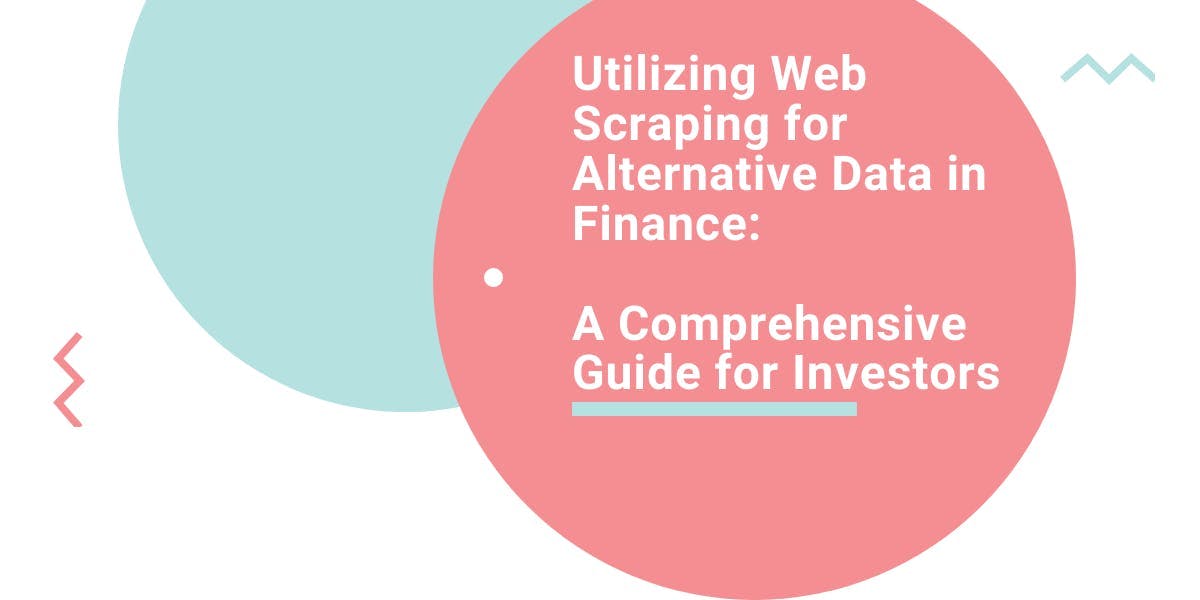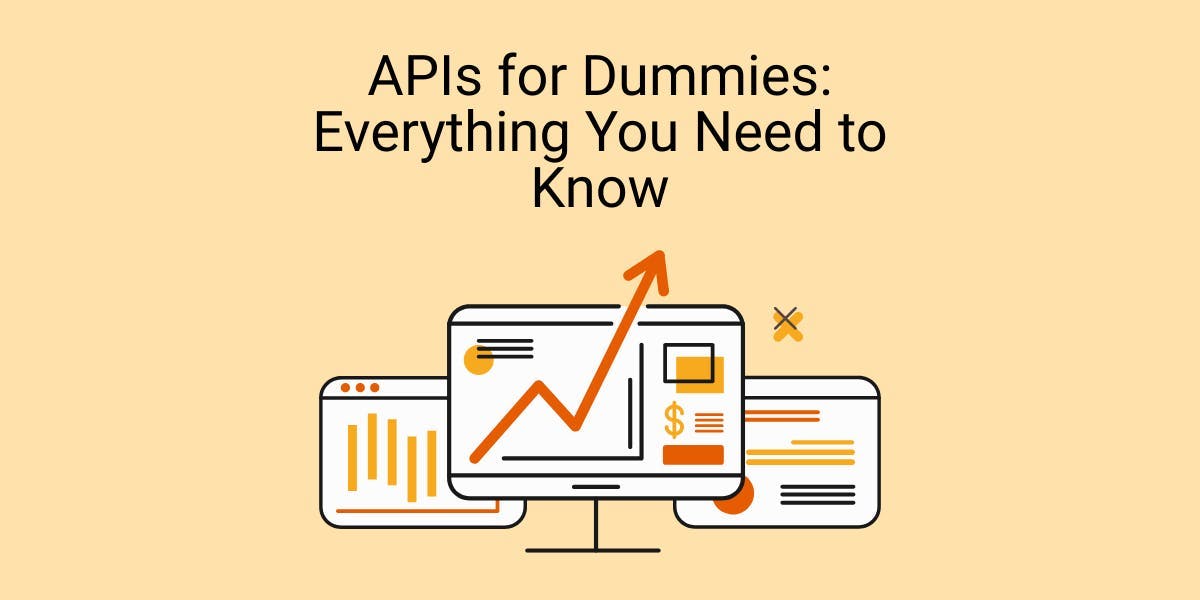The Beginner’s Guide to Extracting Data With APIs
Gabriel Cioci on May 01 2021

Data extraction has been a go-to solution for smart businesses for a long time. But the way they go about doing it has changed continuously with the times.
In this article, we’ll take a look at how APIs have helped developers extract data in the past and how web scraping has begun to become the new norm. You’ll soon see that the spotlight isn’t moving away from APIs. Instead, the way we use APIs to get our data is changing.
First and foremost, let’s look at how developers can harvest data without web scraping tools.
Getting data via the hosts’ API
Some websites or apps have their own dedicated API. That’s especially true for software or sites that distribute data since an API is the best solution to send it to other software products.
For example, Wikipedia has an API because its objective is to offer information to anyone interested. Once they understand how the API works, developers can use the API to extract the data they want, either as a file to store or feed the information staring into different software.
So, as long as a website has an API that you can access, you have a fast and easy way to gain data.
In theory, this sounds great. It means that website owners are making it easy for others to gain data from their sites. In practice, though, it’s not that simple. There are some problematic issues associated with relying on the hosts’ API:
- The website you want to harvest data from might not have an API. Websites don’t necessarily need one.
- It may cost you to use the API. Not all web APIs are free. Some are accessible only under a subscription or after a paywall.
- APIs rarely offer all the data on the website. Some sites only provide snippets of data through the API. For example, a news site API might only send article images and descriptions, not the full content.
- Each API needs developers to understand and integrate them with existing software. Not all APIs work the same, so using them takes some time and coding knowledge.
- The API might impose rate limits on data extraction. Some websites may limit how many requests can be sent in a certain period so the host server doesn’t overload. As a result, getting all the data can take considerable time.
As you can see, the disadvantages are not negligible. So then, when is this method the best option? If you only need a small data set from one or a small number of sites, APIs can be the way to go. As long as the websites don’t change often, this might be both the cheapest and easiest way to go.
So that’s it for data harvesting via API. What about web scraping?
Using web scraping tools
Web scraping simply means extracting the data of a web page. In a sense, it counts even if you do it manually, but that’s not what we’ll focus on here. Instead, we’ll take a look at the different kinds of products that you could use.
Some tools are designed to be user-friendly regardless of how much you know about coding. The most basic product would be browser extensions. Once they are added, the user only has to select the snippets of data on the web page they need, and the extension will extract them in a CVS or JSON file. While this option isn’t fast, it’s useful if you only need specific bits of content on many different websites.
Then there’s the dedicated web scraping software. These options offer users an interface through which to scrape. There’s a great variety of products to choose from. For example, the software can either use the user’s machine, a cloud server controlled by the product developers, or a combination of the two. Alternatively, some options require users to understand and create their own scripts, while others don’t.
A few web scraping service providers opted to limit user input even more. Their solution is to offer clients access to a dashboard to write down URLs and receive the needed data, but the whole scraping process happens under the hood.
Compared to using a public API, web scraping tools have the advantage of working on any website and gathering all the data on a page. Granted, web scraping presents its own challenges:
- Dynamic websites only loading HTML in browser interfaces;
- Captchas can block the scraper from accessing some pages;
- Bot-detection software can identify web scrapers and block their IP from accessing the website.
To overcome these hurdles, modern web scapers use a headless browser to render Javascript and a proxy pool to mask the scraper as a regular visitor.
Of these data extraction tools, one type is particularly interesting to us because it’s an API. To be more exact, it’s a web scraping API.
Using a web scraping API
A web scraping API, usually offered in SaaS format, combines the functionalities of other web scraping tools with the flexibility and compatibility of an API.
Each product is different, but the golden standard for scraper APIs has the following characteristics:
- Uses a headless browser to render Javascript and access the HTML code behind dynamic websites;
- Has a proxy pool composed of datacenter and residential proxies, ideally in the hundreds of thousands;
- Automatically rotates proxies while giving the user the option to use static proxies;
- Uses anti-fingerprinting and anti-captcha functionalities to blend in with regular visitors;
- Delivers data in JSON format;
The best part of using an API is how easy it is to integrate it with other software products or scripts you’re running. After getting your unique API key and reading the documentation, you can feed the scraped data straight to other applications with just a few lines of code.
As long as the users have some coding knowledge, web scraping APIs are excellent options both for enterprises with complex software infrastructure and smaller businesses. Data extraction, in general, is the most useful for companies that rely on price intelligence and product data.
Which is best?
Finding the optimal solution is rarely easy since a lot of factors go into making a decision. Think about how many websites you want to scrape, how many pages, how often, and how likely is it that those pages will change their layout.
For small scraping projects, developers should check if the sources have an API they can use. If you want to avoid coding, browser extensions work well.
For larger projects, we suggest devs try out a web scraping API. Enterprises that don’t want to dedicate coders to the project could look for a company that does the scraping for them.
As a closing note, try a few products for free before making a decision. Most products have free plans or trial periods. Working with an API isn’t just efficient. It can be a lot of fun too!
If we’ve got you interested in web scraping tools, check out this list we’ve prepared for you: the 10 best web scraping APIs.
News and updates
Stay up-to-date with the latest web scraping guides and news by subscribing to our newsletter.
We care about the protection of your data. Read our Privacy Policy.

Related articles

Explore the transformative power of web scraping in the finance sector. From product data to sentiment analysis, this guide offers insights into the various types of web data available for investment decisions.


If curiosity pushes you to learn about APIs, then this APIs for Dummies guide is the best place to learn definitions, API types, documentation, and more.
